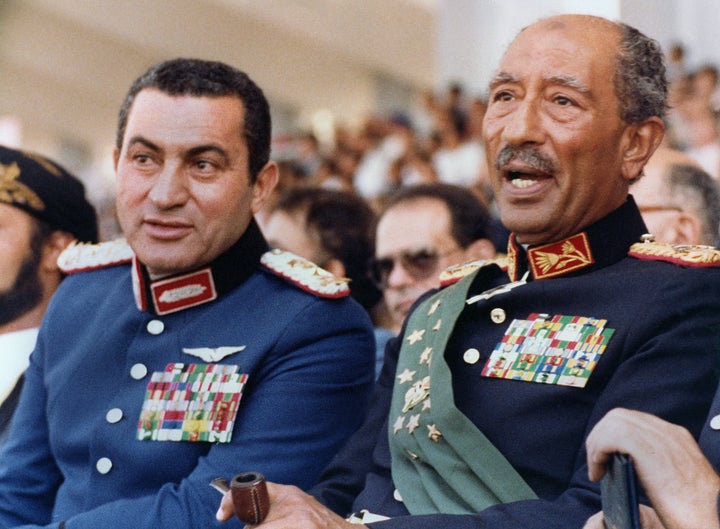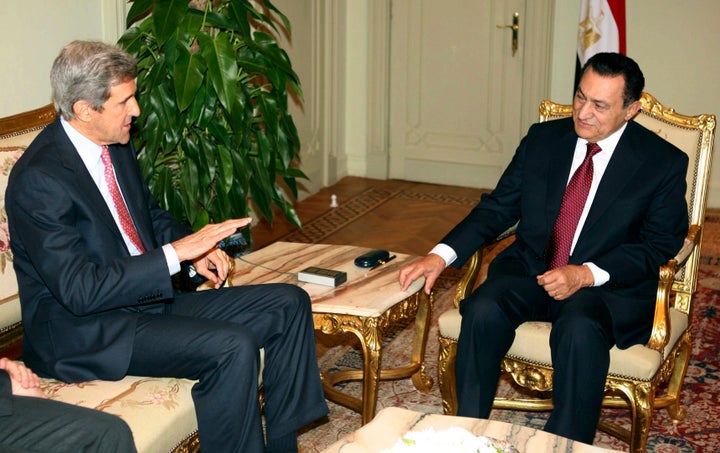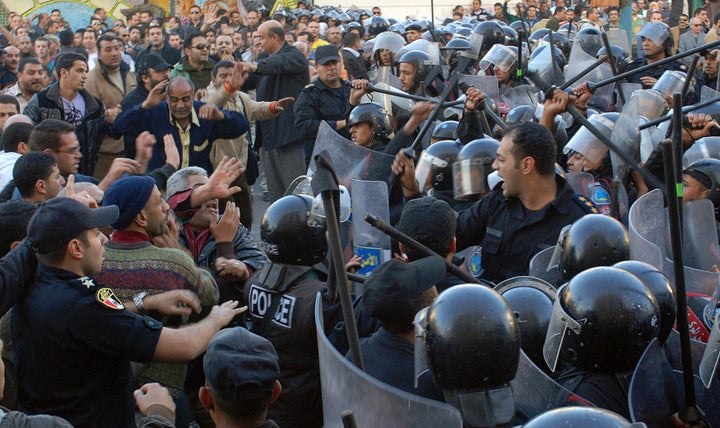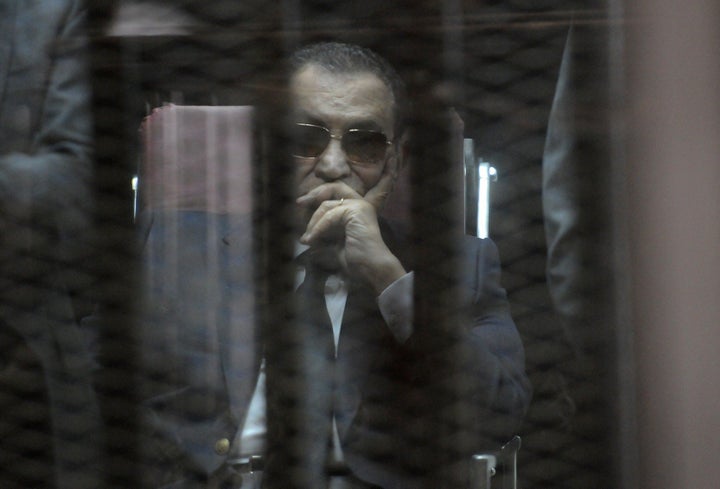Hosni Mubarak, the autocrat who ruled Egypt for nearly three decades before his stunning collapse from power during the Egyptian Revolution, has died in a Cairo hospital at age 91, Egyptian state TV and the BBC reported Tuesday.
Personal Life & Military Career
Mubarak was born in a village north of Cairo in 1928. He is survived by his wife Suzanne, and two sons, Alaa and Gamal. The eldest of his three grandchildren, Mohammed, died at age 12 in 2009 following a sudden health crisis.
Mubarak attended Egypt’s Military Academy and Air Force Academy as well as the Soviet Union’s elite Frunze General Staff Academy. He began his career as a flight instructor at the Air Force Academy in the early 1950s, and rose through the ranks to become commander in chief of the air force and deputy minister of defense by 1972.
The following year, under Mubarak’s direction, the air force supported the Egyptian army’s advance across the Suez Canal to attack Israelis occupying the Sinai Peninsula, marking the start of the Yom Kippur War.
Mubarak was promoted to air chief marshal in 1974 for his leadership during the weeks-long war. Decades later, he said the conflict “breathed new life” into Egypt.

Presidency
Much like his swift political decline, Mubarak’s ascent to power was sudden and unexpected. In 1975, then-President Anwar Sadat appointed the celebrated the military leader to the role of vice president.
Assassins disguised as soldiers killed Sadat at a parade in Cairo in 1981, leaving Mubarak to become the fourth president of Egypt. Mubarak was the target of several failed assassination attempts throughout his time in office.
For his entire presidency, the longtime ruler held the country under emergency law, granting his draconian administration extensive powers without regulation. Constitutional rights were suspended and censorship was legalized, but Mubarak claimed such measures were necessary to stave off Islamist terror attacks and keep opposition groups like the Muslim Brotherhood out of power.
Tens of thousands of people were arrested and held as political prisoners under Mubarak’s regime, as emergency law allowed the government to legally detain civilians without trial for any period of time for virtually any reason. Many non-governmental activities were outlawed, including protests and other forms of dissent.

Mubarak was re-elected for successive terms in 1987, 1993 and 1999 without opposition, as the Egyptian constitution only allowed candidates appointed by Parliament to run against the president. Faced with growing pressure for democratic reform from his U.S. ally and others in the international community and Egypt, he eventually amended the system to allow multi-candidate presidential elections.
The veteran leader won another six-year term in 2005, but critics contested the fairness of the electoral process, saying it still heavily favored Mubarak’s National Democratic Party. The Muslim Brotherhood was said to be the most popular opposition group in Egypt at the time, but Mubarak’s government had banned members of the Brotherhood from participating in political processes, including the election.
Mubarak presided over a period of improved living standards and economic upturn in Egypt, but wealth was unevenly distributed and tensions grew as much of the population lived in poverty while the rich got richer.

The Revolution
It took just 18 days to topple Mubarak’s nearly 30-year rule. Inspired by a successful civil resistance uprising in Tunisia weeks earlier, thousands of Egyptian protesters marched through Cairo calling for an end to Mubarak’s autocratic governance on on Jan. 25, 2011, remembered as the “Day of Anger.”
Over the following two and a half weeks, demonstrations turned violent and rapidly spread across the country as citizens lashed out in defiance against rampant issues including police brutality, political corruption and restrictions on freedom of expression. The army was deployed in several cities to quell the resistance and support police forces.
Millions participated in the explosive protests, organized in part by online activists using social media platforms, during which hundreds were killed and thousands were injured.
Mubarak appointed former spy chief Omar Suleiman as his first-ever vice president amid the chaos on Jan. 29, even though Suleiman was not part of his governing party.
It all came to a close on Feb. 11. Suleiman announced Mubarak’s resignation before disappearing from the political scene and leaving power to the Armed Forces Supreme Council.

Convictions & Acquittals
After his resignation, Mubarak was arrested and faced charges including corruption, embezzlement and complicity in protester killings during the historic uprising that brought a crashing end to his decades-long rule.
The ousted autocrat suffered from a series of health issues while on trial, and was reportedly kept alive on life support for a period of time. Some reports claim that he was once declared “clinically dead,” while other suggest he was in critical condition.
Mubarak was sentenced to life in prison in 2012, but later acquitted by a lower court. He was then retried once more in 2015, before Egypt’s top appeals court and declared his innocence yet again on March 2, 2017. He walked free later that month and returned to his home in Cairo. His two sons were also convicted and acquitted of corruption charges.
The fallen leader reflected upon his own legacy during an emotional speech to his embattled nation in 2011, shortly before his resignation.
“[Egypt] is where I lived; I fought for it and defended its soil, sovereignty and interests,” he said. “On its soil I will die. History will judge me like it did others.”
Calling all HuffPost superfans!
Sign up for membership to become a founding member and help shape HuffPost’s next chapter
Credit: Source link